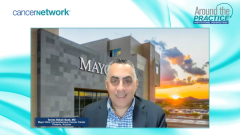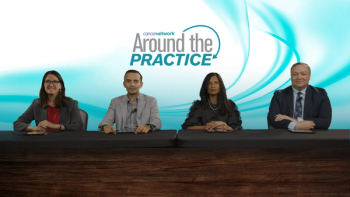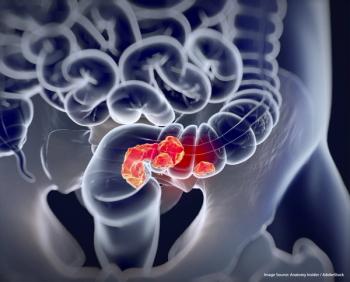
Colorectal Cancer: ctDNA vs cfDNA for Assessing MRD
The panel compares cfDNA with ctDNA for assessing MRD, and outlines when ctDNA testing is ordered and how it’s collected.
Episodes in this series

Transcript:
Tanios S. Bekaii-Saab, MD: Aparna, this is a small emerging field of assessing minimal residual disease and circulating tumor DNA [ctDNA], and we also hear circulating cell-free DNA [cfDNA]. I got a lot of questions from the community. What is ctDNA versus cfDNA? Perhaps you can give us some perspective on this.
Aparna Parikh, MD, MS: Yeah, and even I think liquid biopsies overall, so what is a liquid biopsy? Specific to this discussion of minimal residual disease or molecular residual disease, we know that circulating tumor DNA is the tumor-derived fragmented DNA in the bloodstream. That is distinct and should not be confused with what is called cell-free DNA, which is a larger encompassing term describing just DNA that is freely circulating in the bloodstream from normal cellular processes but is not necessarily of tumor origin. The way that circulating tumor DNA originates is from various kinds of processes; apoptosis, necrosis, or perhaps some active release of cells.
It’s interesting that the fragmentation patterns, so how tumor DNA is fragmented is different than how normal DNA is fragmented, both cell-free and circulating tumor DNA have short half-lives. There’s been some data that it’s as short as minutes to 60 minutes. You can give you a good picture of what’s happening at any moment in time. The key point when you’re trying to understand what these tests are trying to do is there’s lots of cell-free DNA floating around, and you’re trying to find those rare tumor-derived fragments, which is not an easy task. That’s one of the problems with the current test is that sensitivity of picking it up. There’s many different approaches being explored as to how to improve that sensitivity, but conceptually, if you’re looking for a tiny tumor-derived fragment in this background of lots of other normal noise, you can imagine that it’s hard to pick up that tumor-derived fragment. That’s different than a circulating tumor cell which is also referred to as liquid biopsy. All the conversations we’re having today, most of the data is around ctDNA. We haven’t really yet started to talk, and there’s less data around circulating tumor cells, although that’s being actively explored as well.
Tanios S. Bekaii-Saab, MD: That’s also an older story. In some ways it was making headways and then fizzled with ctDNA taking the front seat. Thank you, Aparna, this is incredibly comprehensive. Joleen,talk us through the logistics of ctDNA testing. When should we consider it if we want to order it? How is it typically collected? We touched on it a little bit; tissue-informed versus uninformed. Can you talk about some of the logistical challenges with both at your institution? Please guide us through this workflow.
Joleen Hubbard, MD: The ideal time to test for ctDNA after surgery is about 4 weeks. Based on some data from Stacey A. Cohen, MD, [Fred Hutchinson Cancer Center, University of Washington] at ASCO GI [American Society of Clinical Oncology Gastrointestinal Cancers Symposium], we know within 2 weeks there may be some false positivity. So we believe 4 weeks is the sweet spot to test for any minimal residual disease or ctDNA testing. How it’s ordered depends on the tumor platform that you’re using. Dr Parikh mentioned that there are tumor-uninformed assays where we’re looking for a panel of common mutations with that particular malignancy. Patients go ahead and submit a blood sample, and this is sent off. We usually get a result relatively quickly, within 10 to 14 days, and that can give us a quicker result. There’s also a tumor-informed assay which is more specific for that patient’s tumor, but takes a little bit more testing. The resected specimen is then analyzed for those mutations, and then those specific mutations are looked for in the circulation of the patient. The downside with the tumor-informed is it takes a little bit longer, and sometimes this may delay when you get the testing results. I typically am still able to get it within the 2- to 4-week time frame, so I don’t think I’m missing a window of opportunity for the patient to help inform us and make treatment decisions. I think both platforms are good and we have data using both tumor-informed versus tumor-uninformed.
Subsequent testing, as Dr Parikh mentioned, is relatively quick with either platform. If we want to incorporate this better in practice, then if we have a stage II, and we want to routinely test in order to make some treatment decisions and identify risk, then we need the buy-in of our surgical colleagues to help to get this started when they’re referring patients to us. I agree right now it is a bit of a challenge, but I prefer the tumor-informed assay even though it takes a little bit longer. I think it’s more specific for that patient.
Transcript edited for clarity.
Newsletter
Stay up to date on recent advances in the multidisciplinary approach to cancer.





































































































